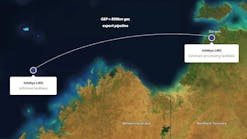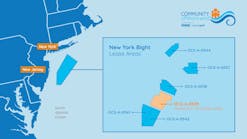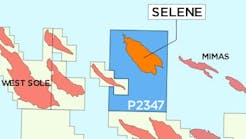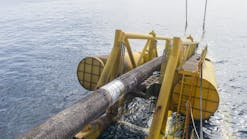William Furlow
Editor-in-Chief
At the National Ocean Industries Association's fall meeting last month, a variety of critical issues were discussed. Presentations addressed everything from deep shelf gas to ultra-wide bandwidth communications. Of all the issues covered, one stood out as being both of critical importance and narrowly publicized.
The surety bonding market is in dire straits. Premiums are going up, and the availability of such bonds is becoming tight. Surety bonds are a key component in many of the deals being made on the outer continental shelf in the Gulf of Mexico. The major oil companies are large enough and have enough money in reserve to avoid purchasing such bonds, but when they sell off existing properties to small independents, one of the stipulations is that the independent be bonded to cover the cost of plugging and abandoning the wells on the field. This protects the major, which would otherwise be responsible if the independent were unable to cover the cost of these activities. It also protects the taxpayers, who would foot the bill if there were no one else able to pay.
While surety requirements make sense, recent events both within and outside the E&P industry have had a negative impact on the insurance industry as a whole and the surety bond market in particular. With a limited amount of capital to cover such bonds, only so many sureties can be written at any time. As the requirements increase, the number of these bonds drops. That means, in some cases, a company wishing to purchase and operate a field may have to put up cash rather than purchase a bond. This is cash that would otherwise be used for E&P activities.
According to industry experts, it is difficult, once a surety is written, to get the money freed up after activities are completed and the field is abandoned. This further impacts the availability of new bonds.
With no relief in sight, it is quite possible majors will plug and abandon the wells on their properties before divesting them to other operators. This frees the major of responsibility for the field after it is taken over by another operator, but it also means the new lessee will have to start from scratch, reentering and working over these wells. The new operator will still have to secure a surety bond or put up the appropriate amount of cash, which may, in many cases, wreck the economics of marginal fields on the shelf.
In a related issue, industry insiders involved with P&A projects in the Gulf are complaining behind the scenes that there is quite a bit of inconsistency in how these projects are carried out and what constitutes site abandonment. This confusion makes such jobs difficult to bid, but it also muddies the water in terms of when the US Minerals Management Service feels confident a site abandonment project is complete and the bond can be released. One of the reasons several companies have stopped writing surety bonds for the offshore sector is the difficulty in getting these bonds released.
Clearly, this is a long-term problem. While the insurance market is cyclical and will eventually turn around, the problems specific to the offshore sector will continue. To overcome this will require better communication among regulators, operators, and the MMS. Contractors, for example, are in a prime position to educate regulators on the key components of site abandonment. Armed with this information, the regulators can better estimate the cost of such projects and perhaps reduce the current bonding requirements. Regulators must walk a fine line between protecting the tax payers and the environment by ensuring all projects are seen through to their completion, and not imposing requirements on smaller operators that leave them strapped for cash and unable to fulfill their critical role in making the most of every development in the Gulf of Mexico.
If these questions can be resolved now, while the insurance market is very tight, then it could mean a much better system will be in place by the time the market turns around. That would mean more cash on hand for operators that can then be put into expanded E&P projects.




